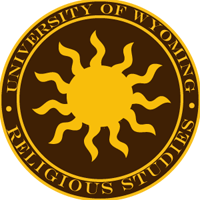
UW Religion Today Column for Week of April 28
April 24, 2013

By Paul V.M. Flesher
We readily speak of “American Christianity” and “American Judaism” and are even wrapping our minds around the notion of “American Buddhism,” particularly on the West Coast. So why does the notion of “American Islam” strike us as strange?
Part of the reason, of course, stems from 9/11 and the events and politics following in its wake. But as the fourth (or is it now the third?) largest religion in the United States, it should be more settled than that. More than 3 million Americans believe in Islam, about the same number as American adherents of Buddhism, and only a million or two less than Judaism. So why does Islam not yet seem settled? Perhaps because it is only beginning to develop as an American religion.
Living in a land of immigrants, Americans have always had a back-and-forth relationship with religious centers abroad. At America’s founding, European Christian churches supported their followers by sending missionaries and preachers to lead them. But many of our earliest institutions of higher education were founded to educate the clergy: Harvard, Yale, Princeton, St. Mary’s in Baltimore, and William and Mary. Americans wanted their own religious leaders, so Catholic and protestant churches opened colleges and seminaries to supply them.
America’s Christians wanted more than trained clergy; they also wanted their lay people to know the details of their religion and to practice it. Toward this end, the churches invested in education and founded primary and secondary schools. Since there was little state-sponsored education in America prior to the 20th century, these schools often provided the only education available.
When Jews began settling in America in large numbers, they followed the same pattern. After drawing upon foreign-trained rabbis for a century or so, Jewish synagogues joined together to found Hebrew Union College in Cincinnati in 1875 for training rabbis. Other Jewish seminaries and yeshivas were created in the ensuing decades. At the same time, Jewish high schools and educational programs sprang up across the U.S. in areas of Jewish settlement.
At the start of the 20th century, Buddhism followed a similar pattern. Asian-trained monks had come to the United States during the 19th century, along with the waves of Asian immigration. After 1900, some founded sanghas (Buddhist monasteries) here and started to train others, Buddhists of both Asian and European ancestry, in the monastic form of leadership common in Buddhism. Buddhist schools also became widespread, especially on the West Coast, to educate Buddhist youth.
How is Islam doing in its Americanization process? It has gotten a good start, but has not moved very far along yet. While Muslim primary and secondary schools have arisen in regions with larger numbers of immigrants, institutions of higher education have not yet developed.
In particular, there are no seminaries dedicated to the education of imams for mosque leadership. Muslim communities either bring in foreign-trained imams or follow dedicated lay leaders. That means there are no American institutions where Muslims can gain the education and training they need to lead a mosque and its congregation.
Religions always reshape themselves to fit into the nation in which they are practiced. When Judaism entered England in the late 1600s, for example, one of the first things it did was create the post of Chief Rabbi, imitating Anglicanism’s Archbishop of Canterbury.
Religious reshaping does not come overnight; it comes from a process of debate and discussion by religious authorities. Muslim seminaries would provide a location for that discussion by religious clergy who understand America’s social dynamics and can think about how Islam fits into them. And, more importantly, those clergy can then train others.
The lack of Islamic seminaries in the U.S. means there are no training programs through which an American Islam can be formed and passed on. American Muslims recognize this need and have begun taking steps to address it. In Connecticut, Muslims have worked with Hartford Seminary (Christian) to establish the first certified training program for Muslim chaplains to supply the requirements of the military and hospitals. At Claremont University, a master’s degree has been established to train Muslim educators and other community workers.
What America needs, however, is a full-fledged Islamic seminary (or two) so that our Muslim citizens can have their religious necessities and practices met by Americans who have been trained here -- just like America’s other larger religions.
Thanks to the University of Wyoming's Seth Ward for providing background for this essay. Read some of his remarks at http://drsethward.wordpress.com/2013/04/21/on-teaching-islam-in-the-united-states/.
Flesher is director of UW's Religious Studies Program. Past columns and more information about the program can be found on the Web at www.uwyo.edu/RelStds. To comment on this column, visit http://religion-today.blogspot.com.
